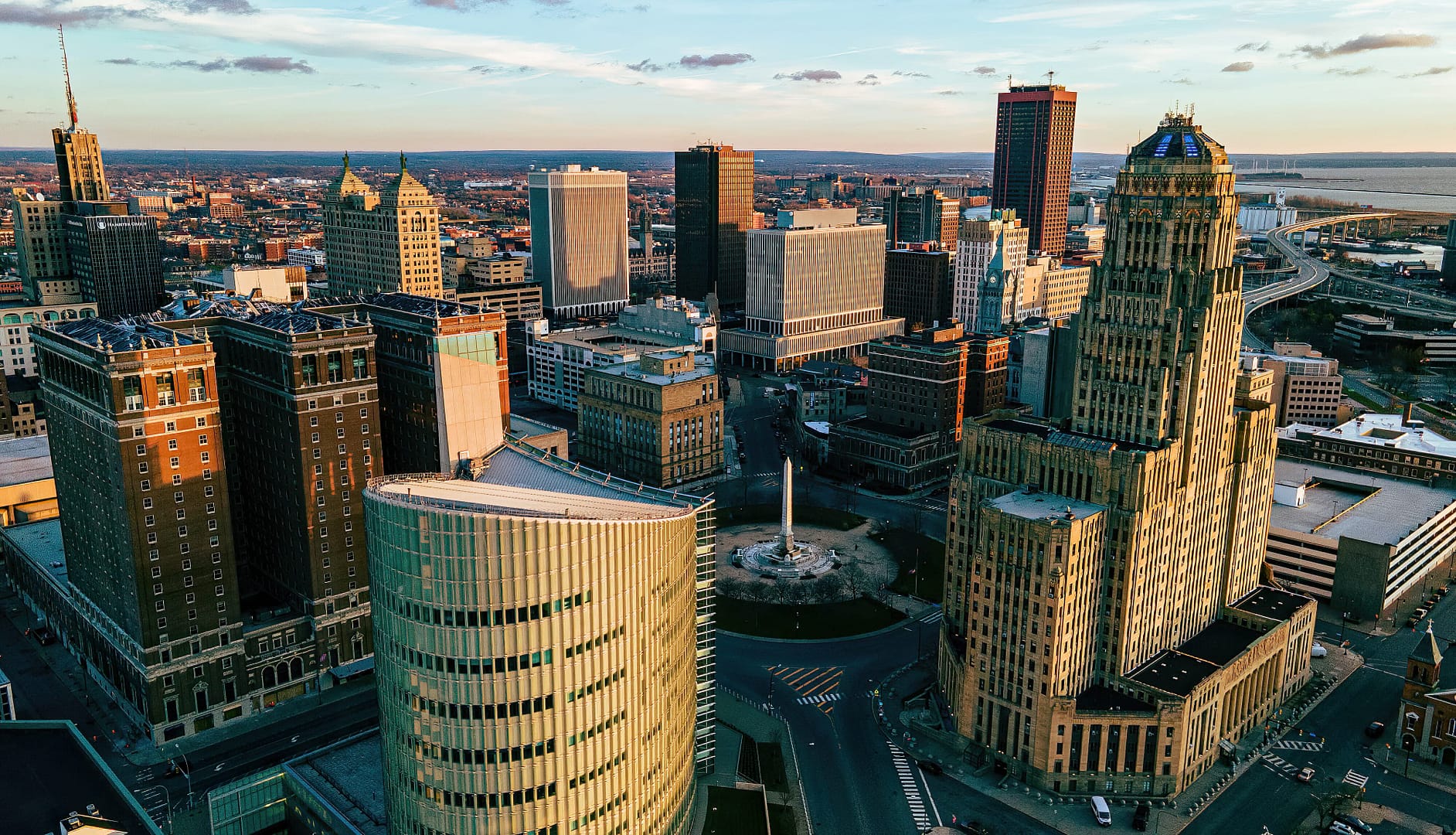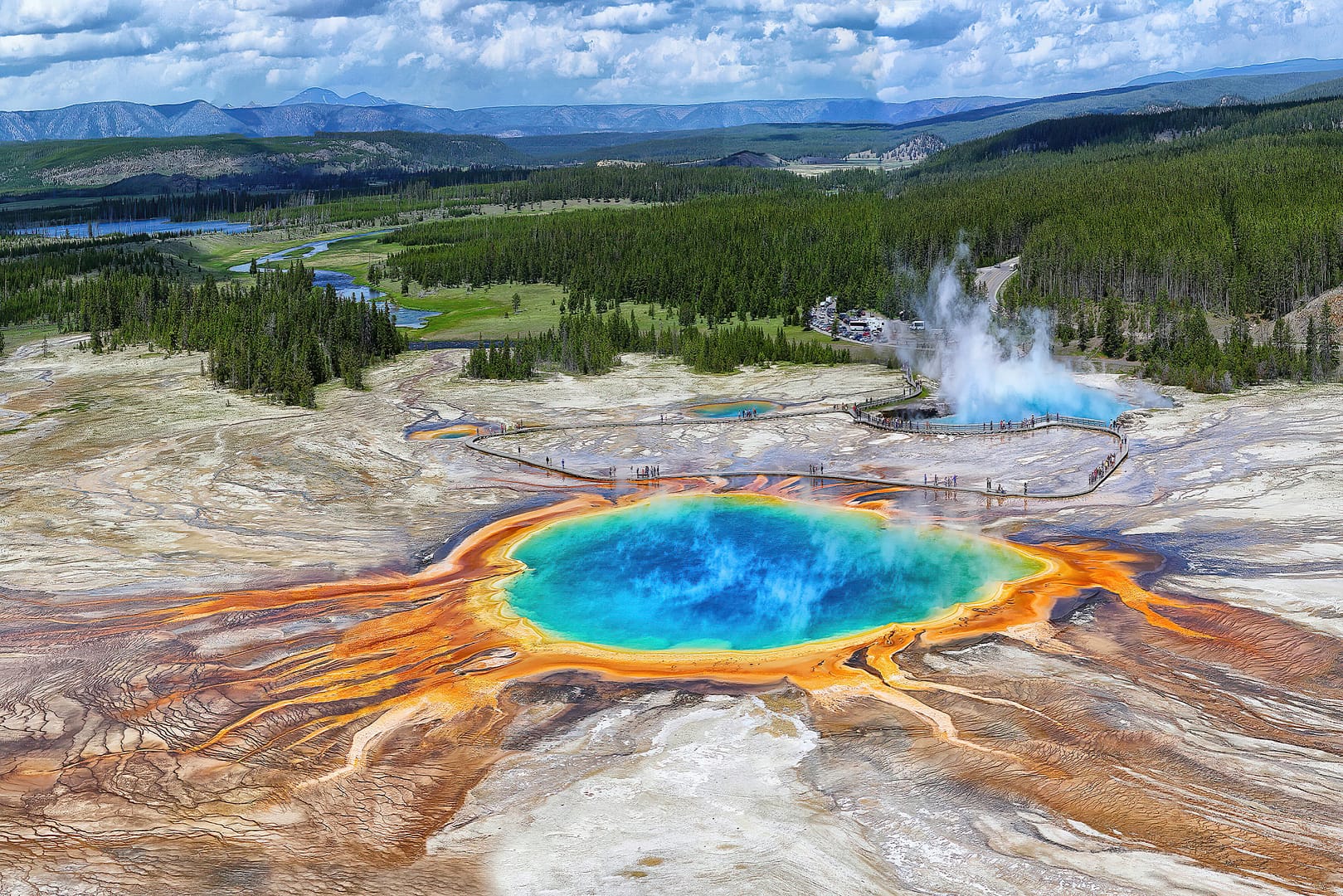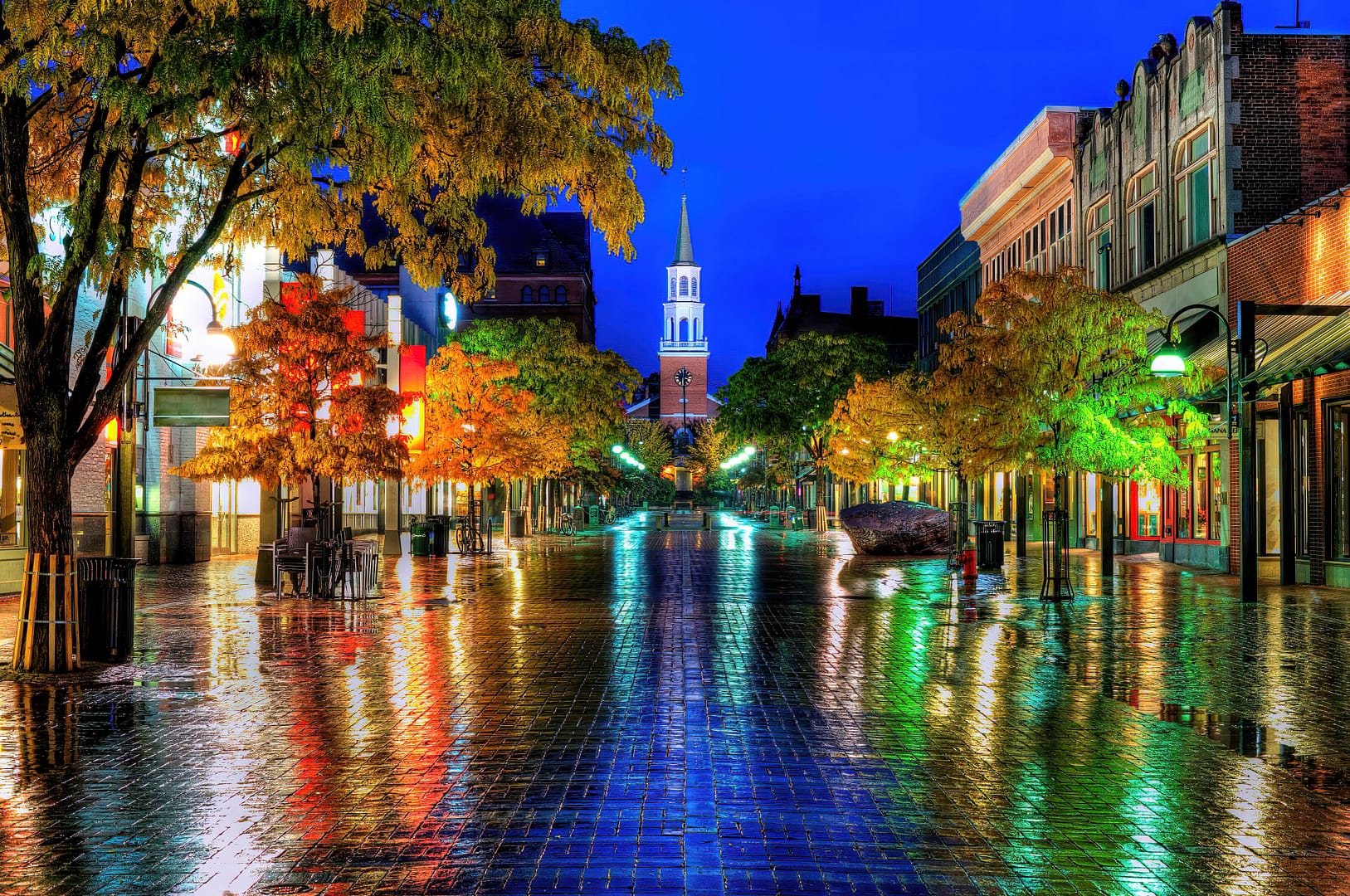When planning a vacation, Buffalo falls somewhere between a beekeeping camp and getting a root canal on most people’s lists. Sure, it may have a couple of Frank Lloyd Wright houses and some chicken wings going for it, but a dream destination it is not. Or is it?
Before you write off poor old Buffalo, consider this. Where else can you stroll through Olmsted-designed parks, take in world-class architecture, indulge in a foodie wonderland, enjoy lively nightlife, and still be home in time to watch Jeopardy? Not to mention, you can do it all without ransacking your kid’s college fund.
From the grain elevators that seem frozen in time to the quirky shops lined up like hipster ducklings, Buffalo serves up history, culture, nature and good old fun with a healthy side of quirk. Don’t believe us? Spend one day prowling the Buffalo Zoo searching for Becky the vomiting vulture or nose to beak with a fish-scented penguin. Or better yet, strike up a convo about pom-pom hats with a local Buffalo Bills fan. Warning: it may get more intense than that time you accidentally unmatched your Aunt Mildred on Tinder.
So go ahead, give old Buff a chance. Rumor has it there’s a renaissance going on in this Great Lakes gem and you do NOT want to miss it. Who knows, you may just find yourself booking a return trip sooner than you think. The wings here have that effect on people. Trust us.
About Buffalo

Buffalo is the second-largest city in New York, and the seat of Erie County. It is situated at the head of the Niagara River at the eastern end of Lake Erie, across the Canadian border from Southern Ontario. There are plenty of things to do in Buffalo. The city also has a rich history and many cultural attractions.
Buffalo's early history begins in the 17th century. It was first known as "Bois Blanc," which means "white people." In 1759, the British colonized the area, and the name "Buffalo" arose. The Erie Canal was built in 1825, and the city quickly grew. At that time, Buffalo was home to more than 30,000 people. Its economy revolved around steel production and grain milling.
The city has many architectural treasures, including the historic Ellicott Square Building and the Buffalo National Savings Bank. During the Industrial Revolution, Buffalo was a thriving city, centered on the Erie Canal and became a major transportation hub. The city commissioned prominent architects to design its buildings. Frederick Law Olmsted, one of America's most prominent architects, designed Buffalo's park-scape. Inspired by the architecture of Paris, Olmsted designed a cityscape that included a series of parks and green spaces.
Why Go to Buffalo

The city has plenty to offer. While some attractions are fun, others are more important. A great example of the latter is Buffalo's Forest Lawn Cemetery, which contains important American history. Visitors should not miss this place! Its ambiance is reminiscent of a 19th-century New York hotel.
If you're looking for an activity for children, Buffalo offers a wide variety of attractions that will satisfy them and keep them entertained. The Buffalo Children's Museum is based on the principle that "play is essential to health, growth, and fun." It is filled with interactive exhibits, which will engage your child's senses. The museum also offers seven play zones, including a skyline view from the fourth floor.
Buffalo is home to some of the nation's oldest and finest architecture. Famous architects like Frank Lloyd Wright and Louis Sullivan honed their craft in this region. You'll also find postcard-perfect neighborhoods and a bustling waterfront, and you'll find some of the country's first skyscrapers. The city is also home to many private homes and gardens that welcome tourists.
Best Time to Go

If you're planning a visit to Buffalo, New York, you'll probably want to choose a time of year that's not too hot or too cold. The best time to visit is between July and September. July has the longest daytime hours, while May tends to have the most precipitation. The temperatures during these months are pleasant enough to visit the area without a reservation, and you'll have the most time to explore the city's attractions.
While the weather in Buffalo is moderate, January, February, and April tend to be windiest. Wind speeds average about 10.2 knots, which is 11.7 miles per hour. Nevertheless, it's still a breeze compared to the winds in other parts of the country, and the highest sustained winds in January reach 19.2 knots.
Buffalo is a vibrant city with a rich history. It has a thriving cultural scene, and it's home to Niagara Falls. If you're looking for something to do during your visit, Buffalo is a great choice. Visitors should take advantage of its art scene, which includes a variety of museums and galleries. If you'd like to visit an iconic building, Buffalo's City Hall is a must-see. This striking art deco building rises dramatically over downtown Buffalo. It's the city's emblem, and its interiors are stunning.
How to Get Around

If you want to get around Buffalo without spending a fortune, there are plenty of ways to do so. There is a bus system and train service, but if you prefer a private vehicle, you can hire a taxi. You should call ahead for a taxi, as you can't simply flag one down on the street. Buffalo is home to the Buffalo Niagara International Airport, which is about 10 miles east of the city. The Amtrak train stops near the city center.
If you're coming from a bigger city, you'll be surprised by the number of ways you can get around Buffalo. The city is home to some world-class architecture, and you can enjoy some great local cuisine and drink while you're there. There are multiple carriers that fly to Buffalo.
If you're traveling with your family, you can choose a car rental and avoid paying for parking. You can even rideshare to get around town for a cheap price. Parking in Buffalo is easy and ride-share services are convenient.
Best Restaurants

The Best Restaurants in Buffalo offer a wide variety of dining options. From casual lunches to celebratory dinners, Buffalo's restaurants have something for every taste. You can find a Buffalo steakhouse, for example, with a menu that includes everything from rack of lamb to Maine lobster. The restaurant also offers an extensive wine list and features an outdoor patio. The prices are also competitive.
The Dapper Goose, which opened in 2016, is a local favorite and offers a modern twist on traditional steakhouse favorites. The menu consists of small and large plates and is based on fresh, locally sourced ingredients. Its menu is complemented by a wide selection of wine by the glass, craft beer, and decadent cocktails.
Buffalo is known for its pub grub, but you can also find upscale restaurants. Many of the city's best restaurants feature eclectic menus from top chefs. EB Green's and Oliver's are two excellent choices that offer good service and superb food. For Italian food, Salvatore's Italian Gardens and San Marco Ristorante are a few examples of fine dining options.
Things to Do

Buffalo has plenty to offer those looking for an exciting getaway. You can experience the world-renowned Buffalo Zoo, one of the city's most popular tourist attractions. This animal sanctuary, opened in 1875, features over 1,000 animals and informative exhibits. Visitors can experience the thrill of zookeeping, watch live animal demonstrations, or take a tour of the museum.
Buffalo is home to several bars, restaurants, and clubs. Many of Buffalo's rowdiest clubs are located along Chippewa Street, including Soho and the Rec Room. Be sure to check out the bar menus to find a weird cocktail. Buffalo is also home to some rustic bars, such as Allen Street Hardware and Club Marcella.
Another popular attraction is the Forest Lawn Cemetery, which houses the final resting places of influential people. A large number of sculptures and other art installations add a touch of beauty to the cemetery. If you enjoy theater, Buffalo also has a great theater scene. The Shea's Performing Arts Center, which has three theaters, hosts international theater companies, Broadway productions, and other performances.
Neighborhoods to Know

If you're planning to move to Buffalo, New York, you'll want to understand its neighborhoods. The city is home to over 32 different neighborhoods, so figuring out which one is right for you will be an important step in your relocation process. Consider your personal style and lifestyle when deciding on where to live. Depending on where you're moving, you may want to consider an area that's popular with families or one that's more affordable and walkable.
North Park is a distinctly Italian-American neighborhood on the city's East Side. Located near the Buffalo Zoo, this neighborhood offers great shopping and dining options. This neighborhood also has an active retail district, including the historic North Park Theater. The city's residents love it here, so it's no wonder that North Park is one of Buffalo's top neighborhoods.
South Buffalo features two historic parks designed by Frederick Law Olmsted, the man behind New York City's Central Park. The Tifft Nature Preserve and Botanical Garden are also in South Buffalo. Both parks are open year-round, and the Botanical Gardens are home to beautiful flowers and plants. South Buffalo is also home to the University at Buffalo's South Campus.
Weather

Buffalo's weather varies throughout the year. During the winter, the city experiences a cold spell that lasts about 3.3 months. In this period, the average high temperature is below 40°F, while the average low temperature is just under 21°F. The coldest month of the year is January, with an average low temperature of 21°F and a high temperature of 32°F. The figure below shows the average temperatures for the city at different times of day.
The warmest months of the year are June, August and July. Buffalo rarely experiences extremely hot days. Summer is generally warm, with temperatures reaching the low 80s, but September brings with it chilly days. Buffalo has very cold winters, with average temperatures hovering at -3.2°F. The coldest nights reach a low of -18°C, which is not pleasant for anyone.
Buffalo's topography is relatively flat with modest elevation variations. The area's average elevation is 596 feet. There are four weather stations that are near enough to contribute data to the Buffalo climate model. The records from each station are adjusted for their respective elevation differences and MERRA-2 satellite-era reanalysis. The combined data from these stations is then used to calculate the average temperature of Buffalo.














